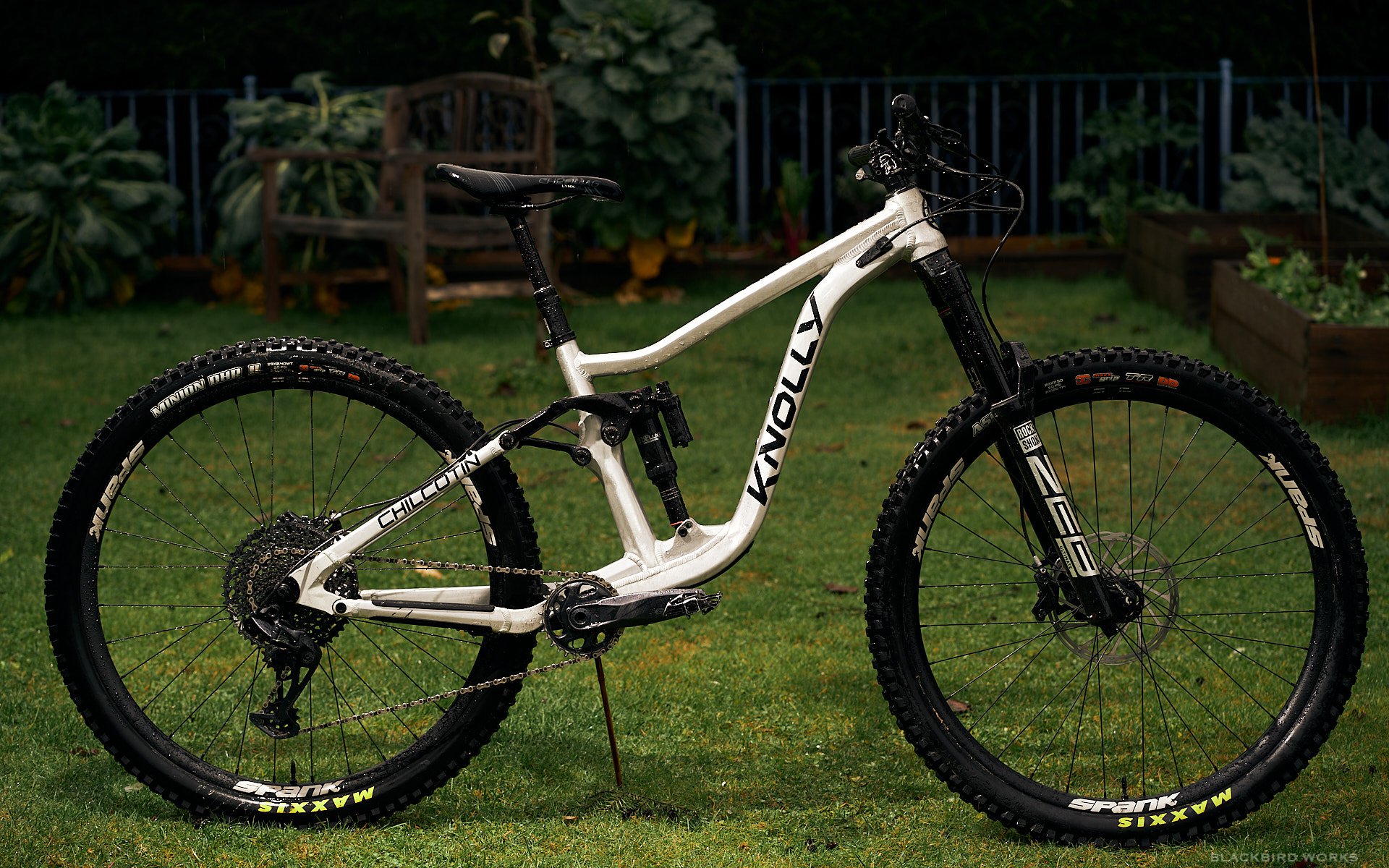
Knolly turns up the heat with a new Chilcotin 29er
Knolly Bikes Chilcotin 167 - First Look
Knolly Chilcotin 167
If you name a bike model after the iconic mountain range in south west British Columbia it better deliver. If you've set rubber on the extremely demanding terrain of the region, you'd know that your bike needs to be light enough for 40+ km days in the saddle and tough enough to handle scree slopes like a downhill bike.
The beauty of the South Chilcotins can lull you into a sense of warmth and security, at least until the inevitable encounter with a big furry Grizzly. The last thing you want is a carbon XC bike between you and the creature. Metal is the preferred material for the defensive bike of choice.
Knolly revised the long-in-the-tooth Chilcotin that previously rolled on 26" wheels with 160mm suspension travel and a 67˚ headtube angle. Now you have multiple travel options (151mm-167mm) and oh so popular 29" wheels on this beast sporting a 63.8˚ head angle.
I'm looking forward to bigger days and bigger mountains aboard this latest creation from the Knolly think tank.
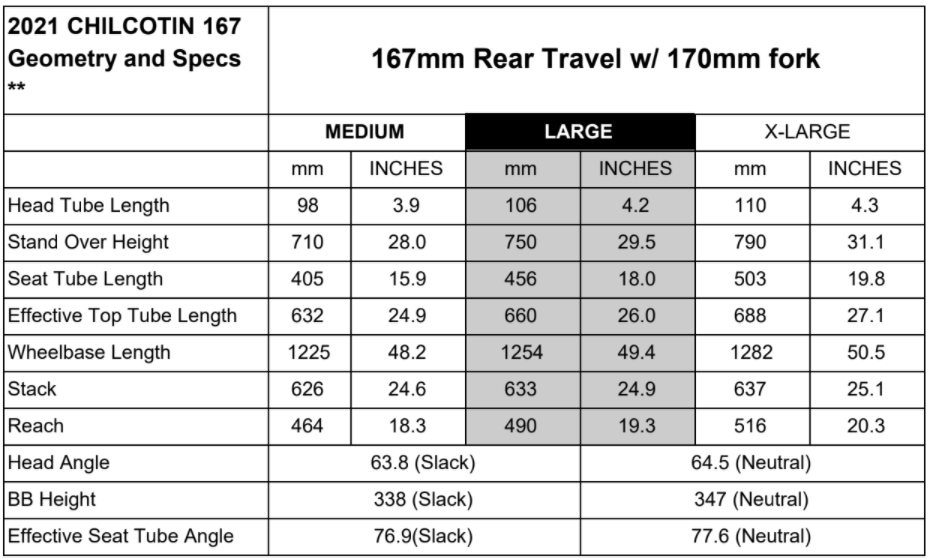
Draw your own conclusions chart
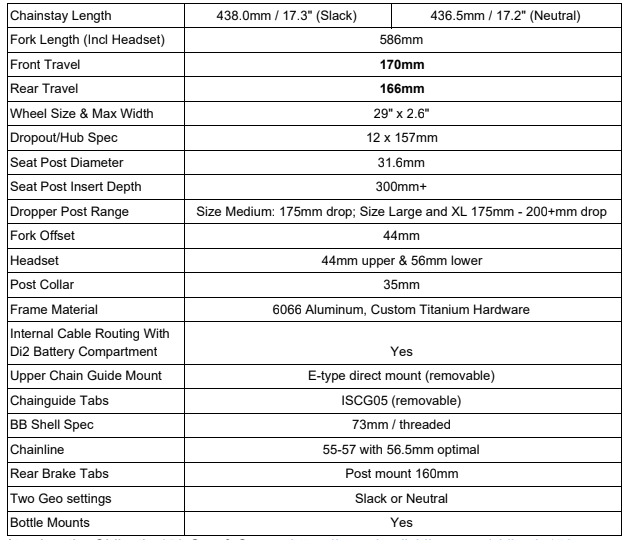
Chart continued
Frame First
Rockshox, Fox, Sram, and Shimano all released what they could for 2020 and they've all run out of inventory for 2021. Thankfully the Frame is central to all the small things that make this raw beast go "boing." There is a lot going on with any Knolly from an industrial designer's perspective. It's a polarizing aesthetic for the consumer; some love it and some just don't. Function follows form, however, and Knolly's patented Fourby4 suspension design promises advanced suspension kinematics.
The offset seat tube design is deceiving, at first giving the illusion of insanely long chainstays but don't be fooled because the stays measure 438.0mm / 17.3" (Slack) 436.5mm / 17.2" (Neutral); long enough for stability and shortish for trail time tomfoolery. The aforementioned offset also allows for a straight seat tube and thus one of the longest insertions for dropper posts on the market. My medium-sized sample arrived with a 175mm Reverb and I would be able to run 200mm dropper for my 5'9" build with 32" inseam.
There are two holes for the bottom shock hardware to attach to and they change the bike's charm from weekender billy goat to shuttle beast in under a minute. All cables are routed internally through the mainframe and the ports have a purposeful presence. Derailleur cable and brake housing exit behind the seat tube and carry along the top of the seat stays.
The suspension hardware is marked titanium and labelled with torque specs. It is understated, utilitarian and almost a shame to see them painted. Raw ti on a raw alloy frame would look sexy in my opinion but I appreciate the subtle bling the Ti hardware suggests hiding behind a coat of black lacquer.
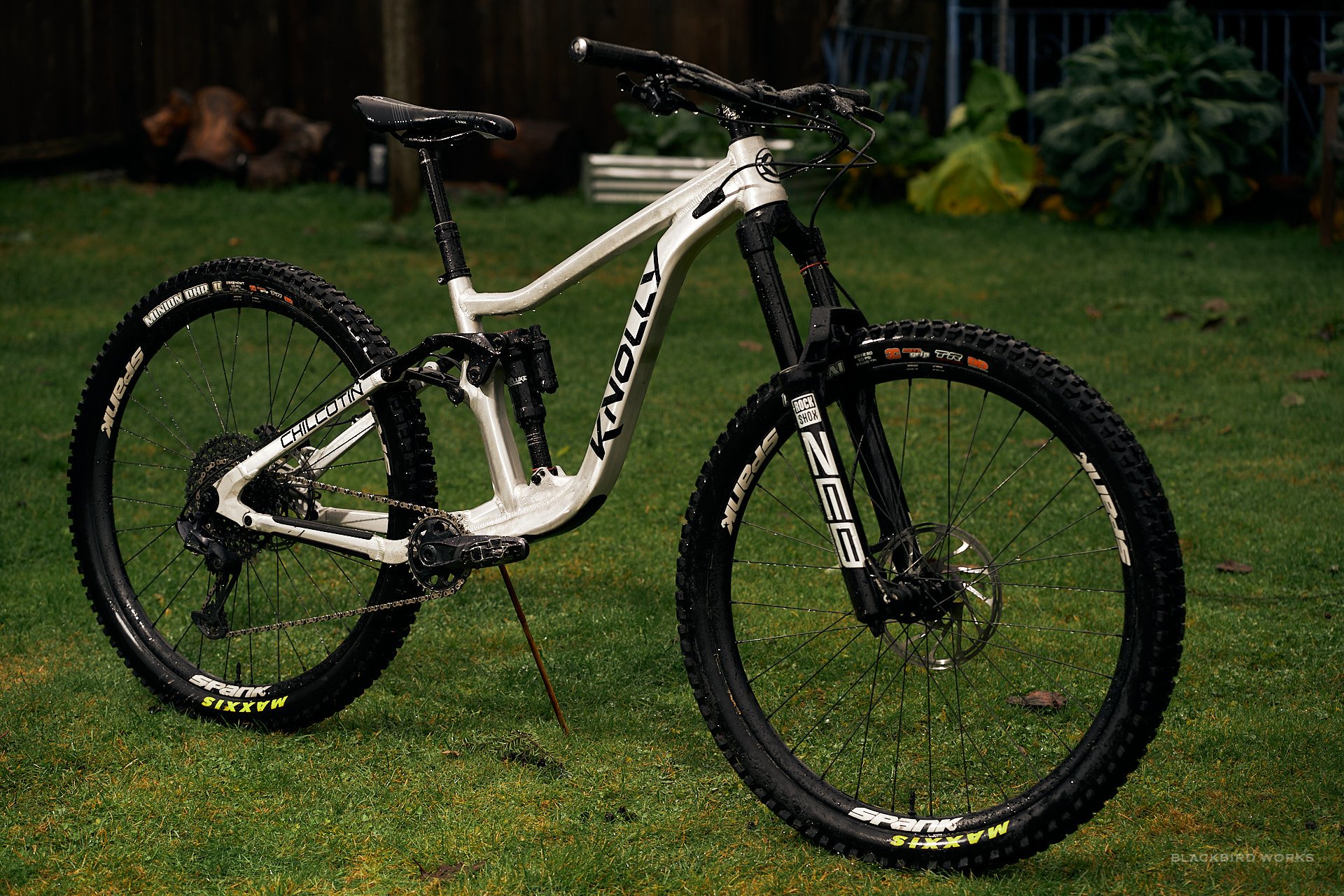
Pre-production model here to get a few minor tweaks
Build Kits
The Chilcotin will come in two dresses. The Dawn Patrol kit has a Rockshox Super Deluxe Ultimate shock and a Zeb Ultimate fork. A fantastic set-and-forget suspension pairing that has been proven under demanding riders on rough terrain. The Extra Credit build has Fox bouncers with a little more adjustability but arguably similar performance to the RS clad Dawn Patrol.
My demo unit was draped in Chromag bits on the touch points. The Hifi 35 Stem and Fubar 25 Bars are a solid BC homage and the Lynx saddle and Chromag grips were delightful to see. Knolly tells me these parts are subject to 2021 Availability so don't be alarmed if you see another manufacturer's bits hanging off of your final build. I'm sure they will offer equal or better value at the end. Sram Code brakes are virtually standard on heavy-hitting bikes but the bottom end R model was a little disappointing to see because the lever feel is less than ideal compared to the RS or RSC models. Tires were the MaxGrip DD versions of the Shore-worthy Assegai and DHR II . Added weight makes the Double Downs slower on the ups with their added weight and drag but absolutely worry free on the way down. I hope a similar caliber of casing and grip is offered for the production models.
Spank wheels and hubs are a solid option for smash and go kind of riding too. The hub isn't particularly fast-engaging and the rims aren't light but they are likely to be relatively trouble-free and can take a good hammering by the most careless riders. SRAM's GX drivetrain is a hard-working group in a wide variety of conditions and the rear derailleur won't break the bank if sacrificed to a poorly-placed rock.
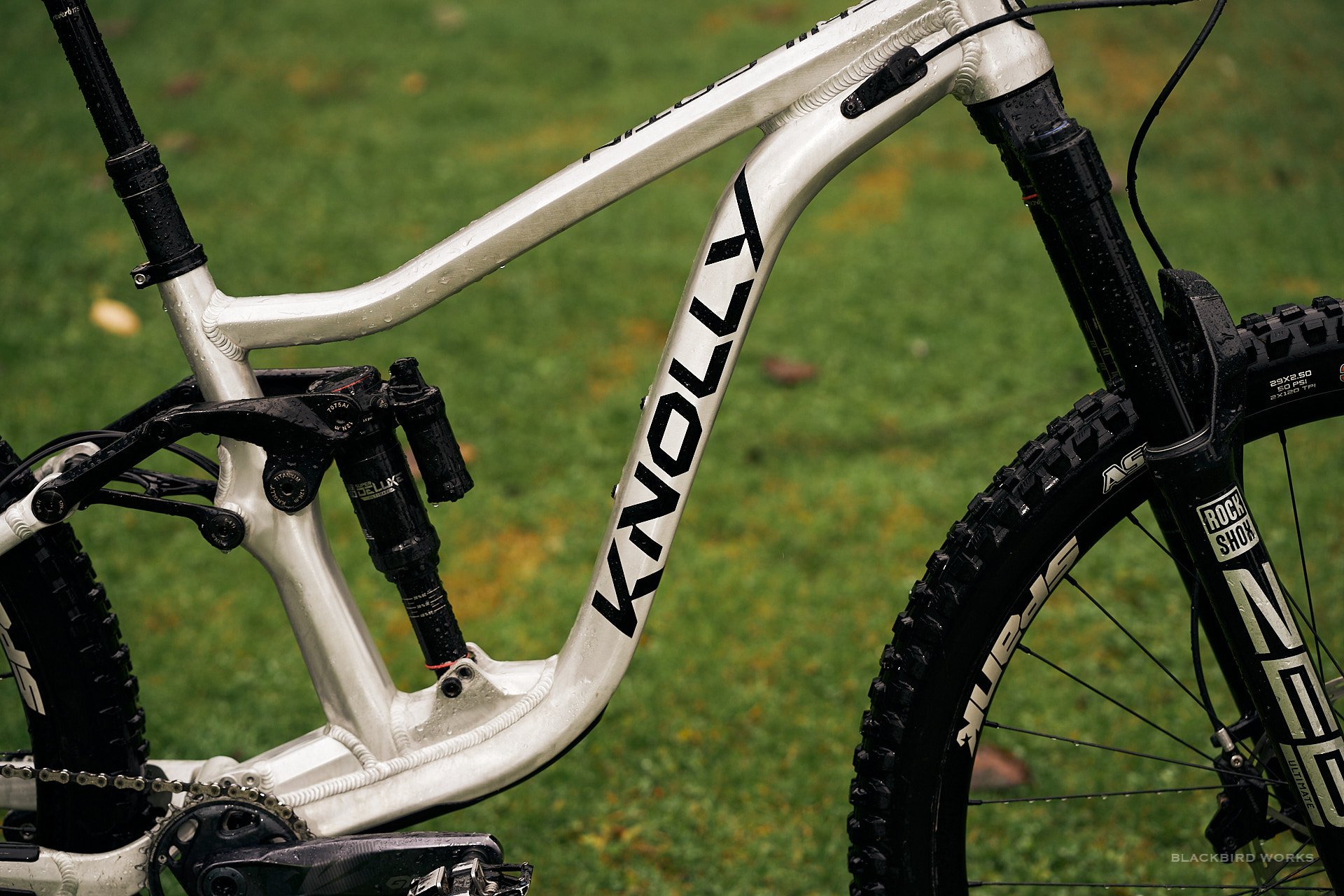
Spacious in design and easy to clean
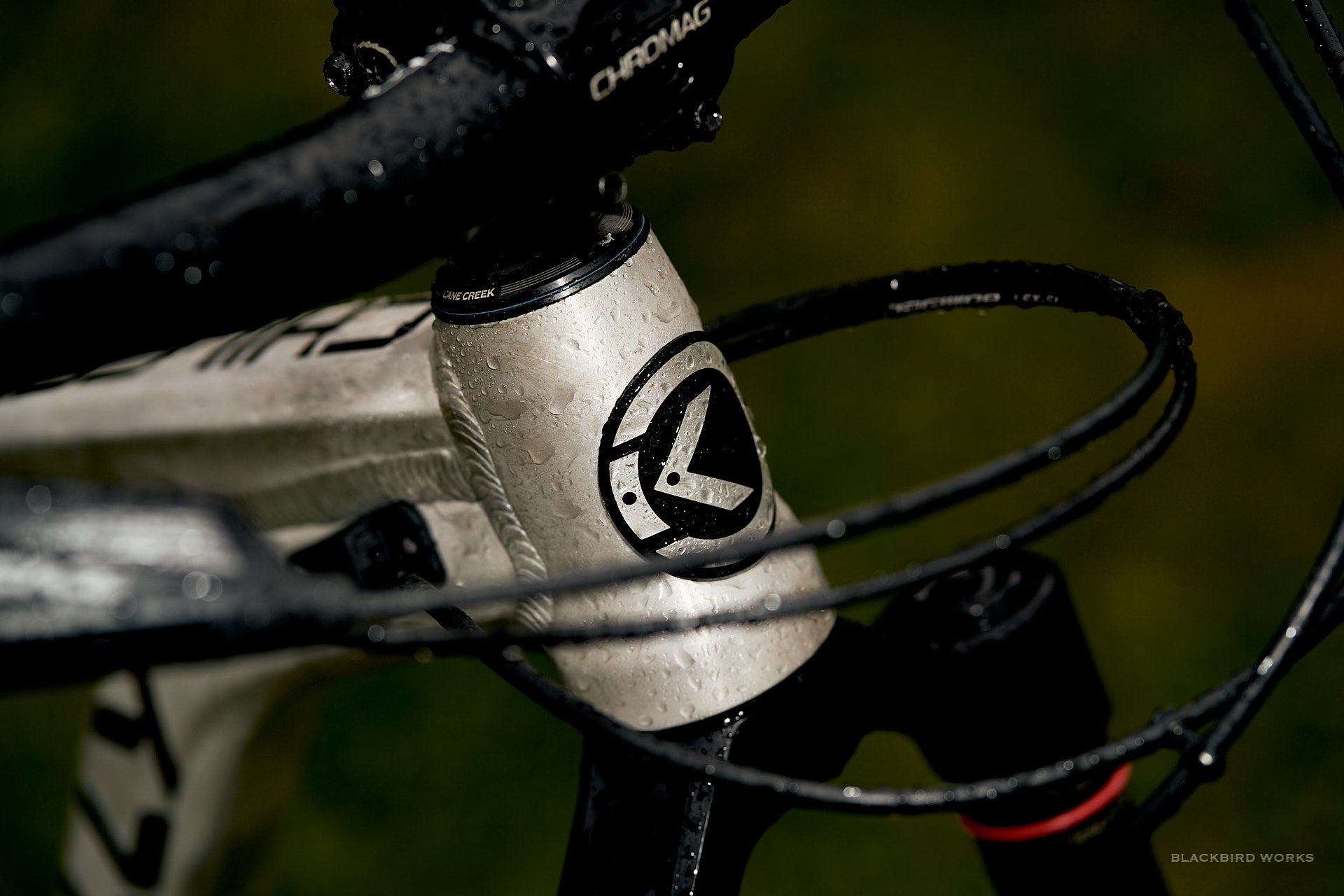
I like the clean logo and a metal head badge
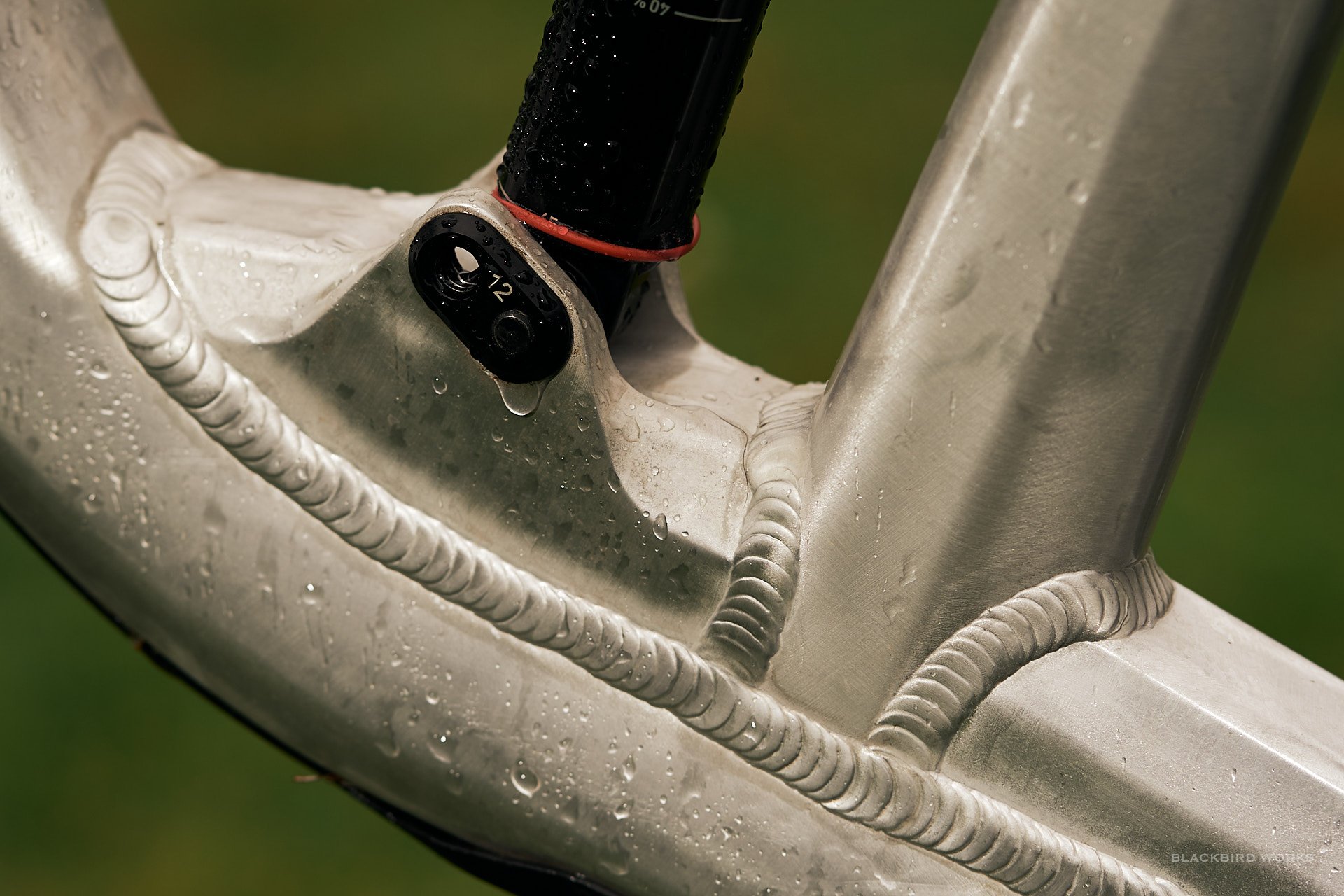
Neutral or Slack positions for the Shock mount. Production models will have labels as such
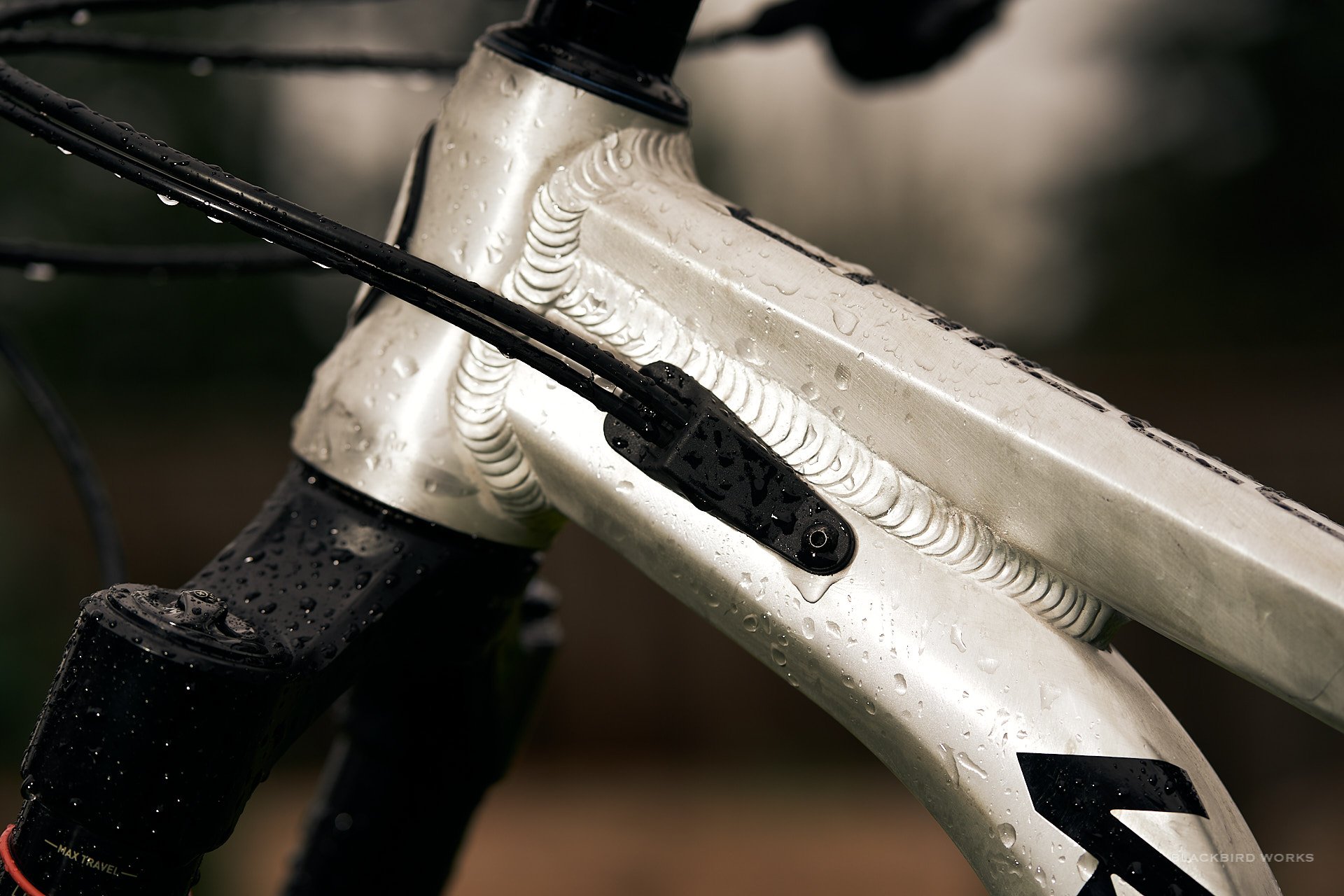
Cable ports have a solid, bolted on design
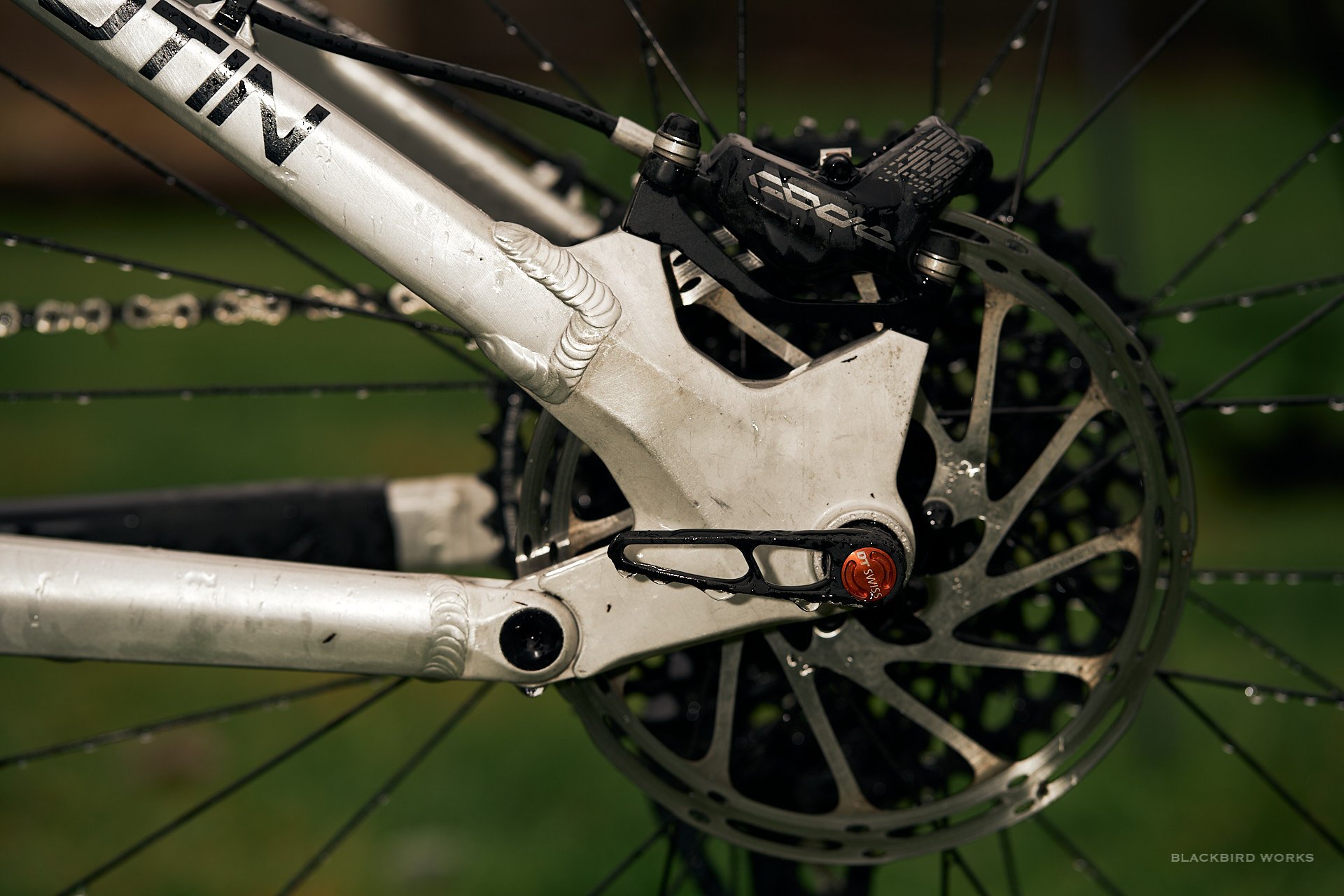
Burly dropouts are 160mm post-mount. The bikes come with 180mm rotors.
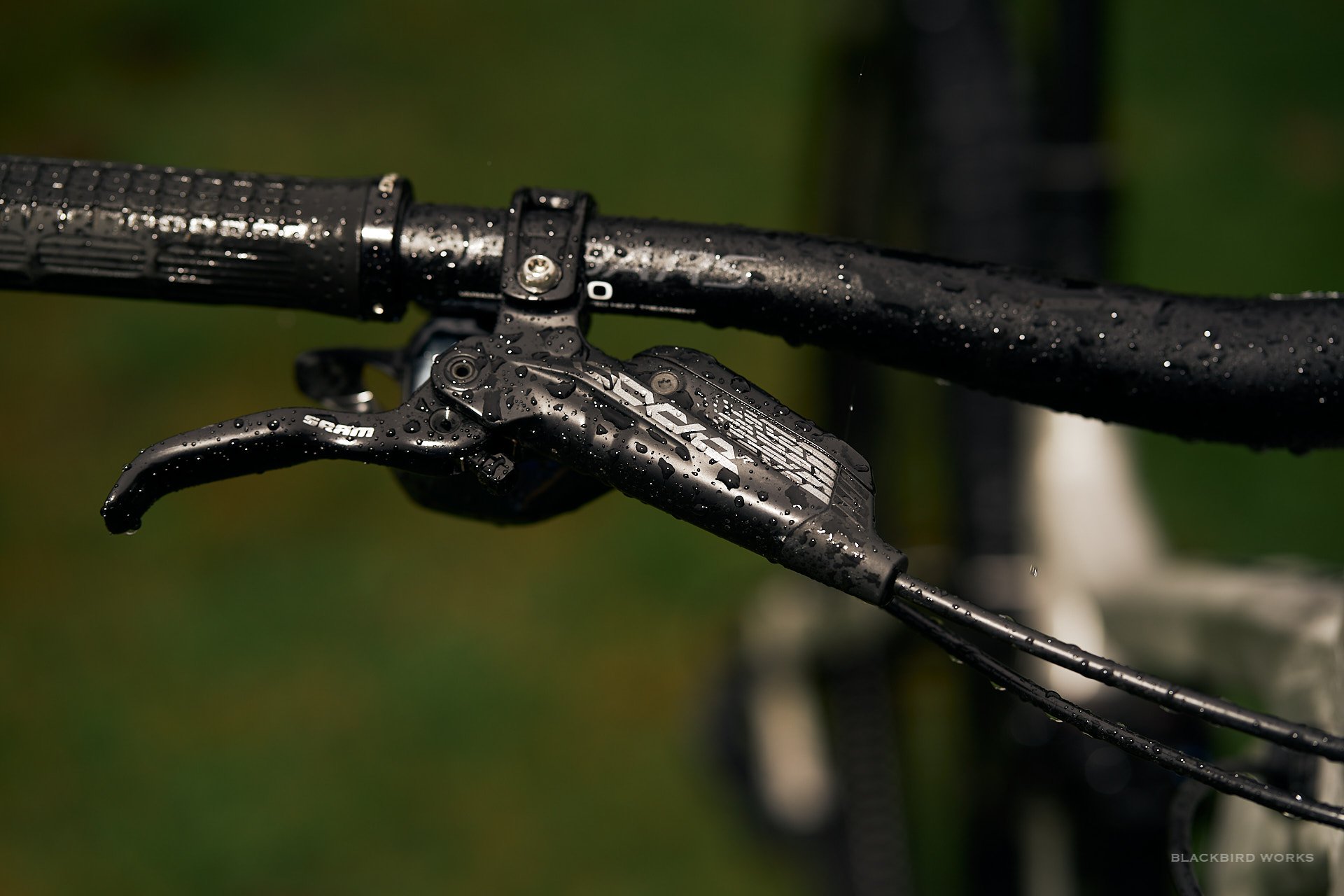
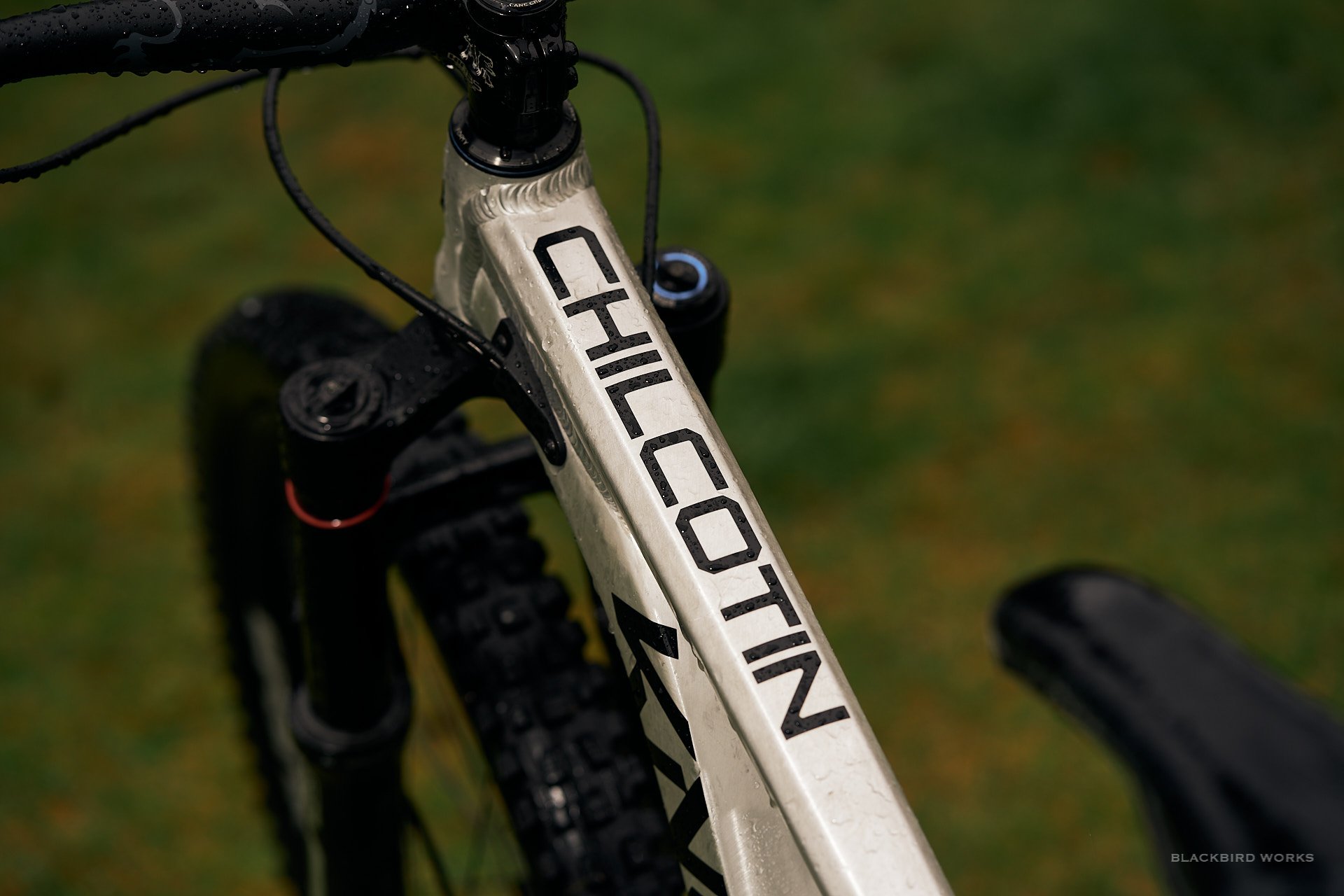
Same name, totally different bike from the yesteryear's Chilcotin
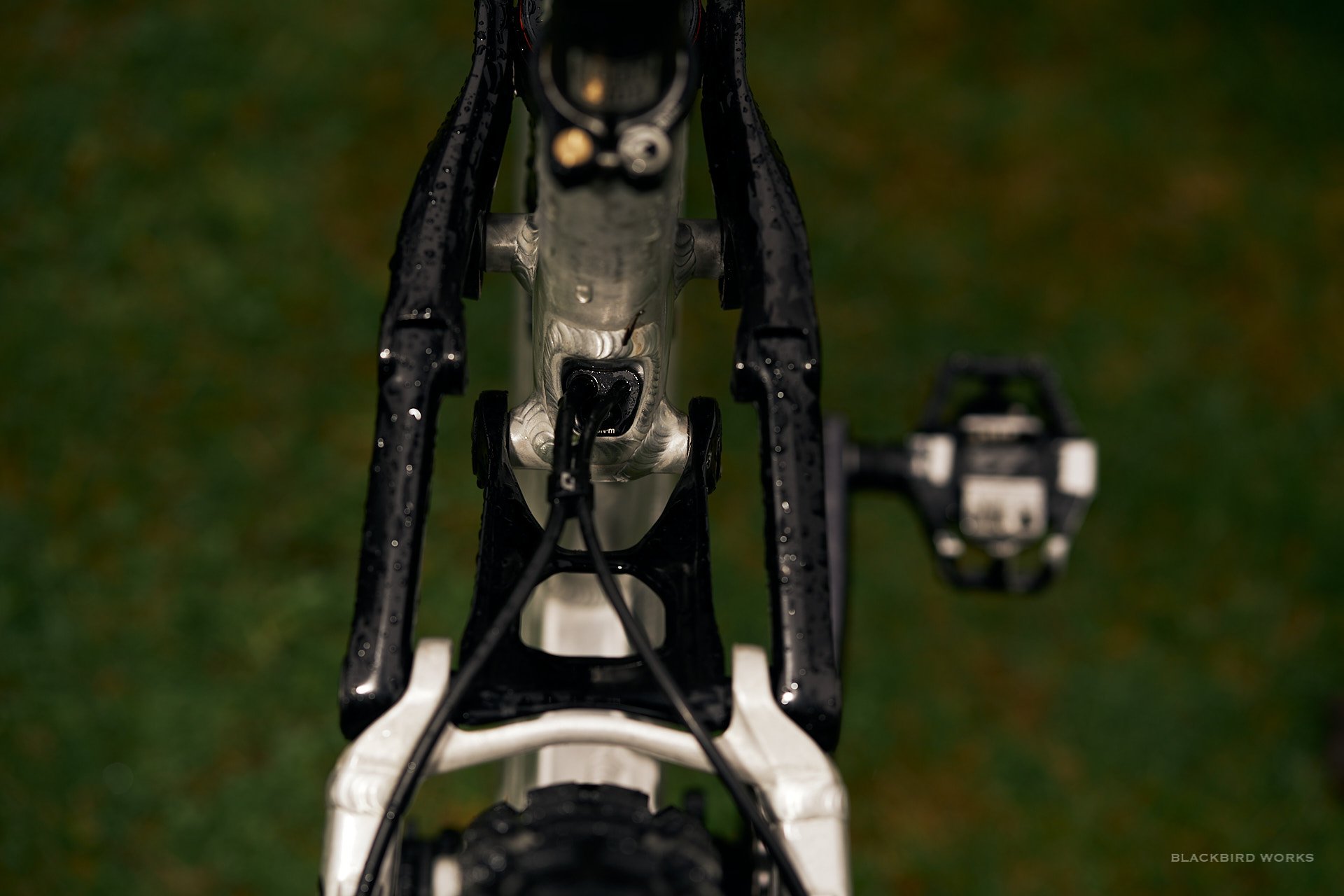
Wide supportive rocker link and internal cable exit port
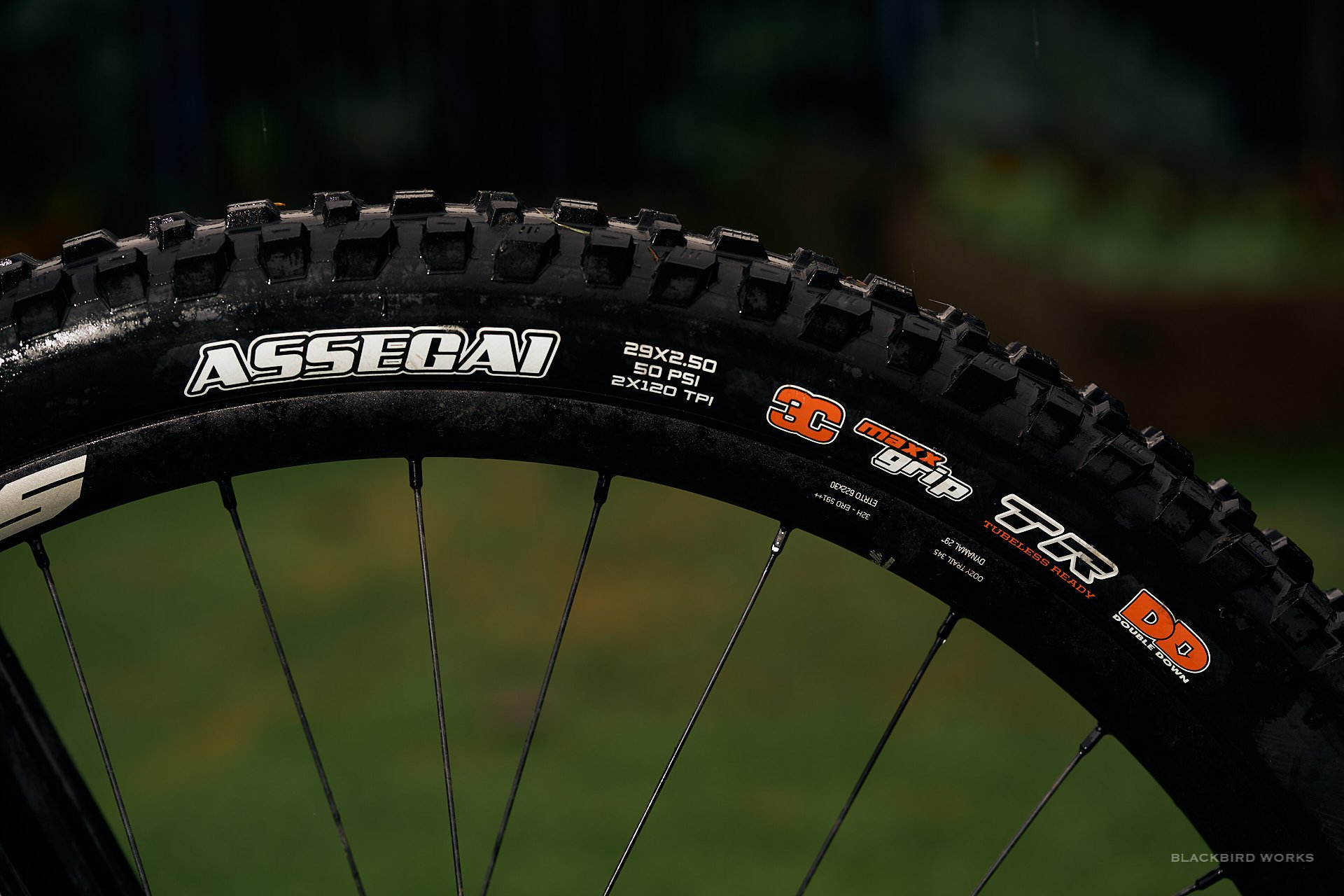
Grip factory up front
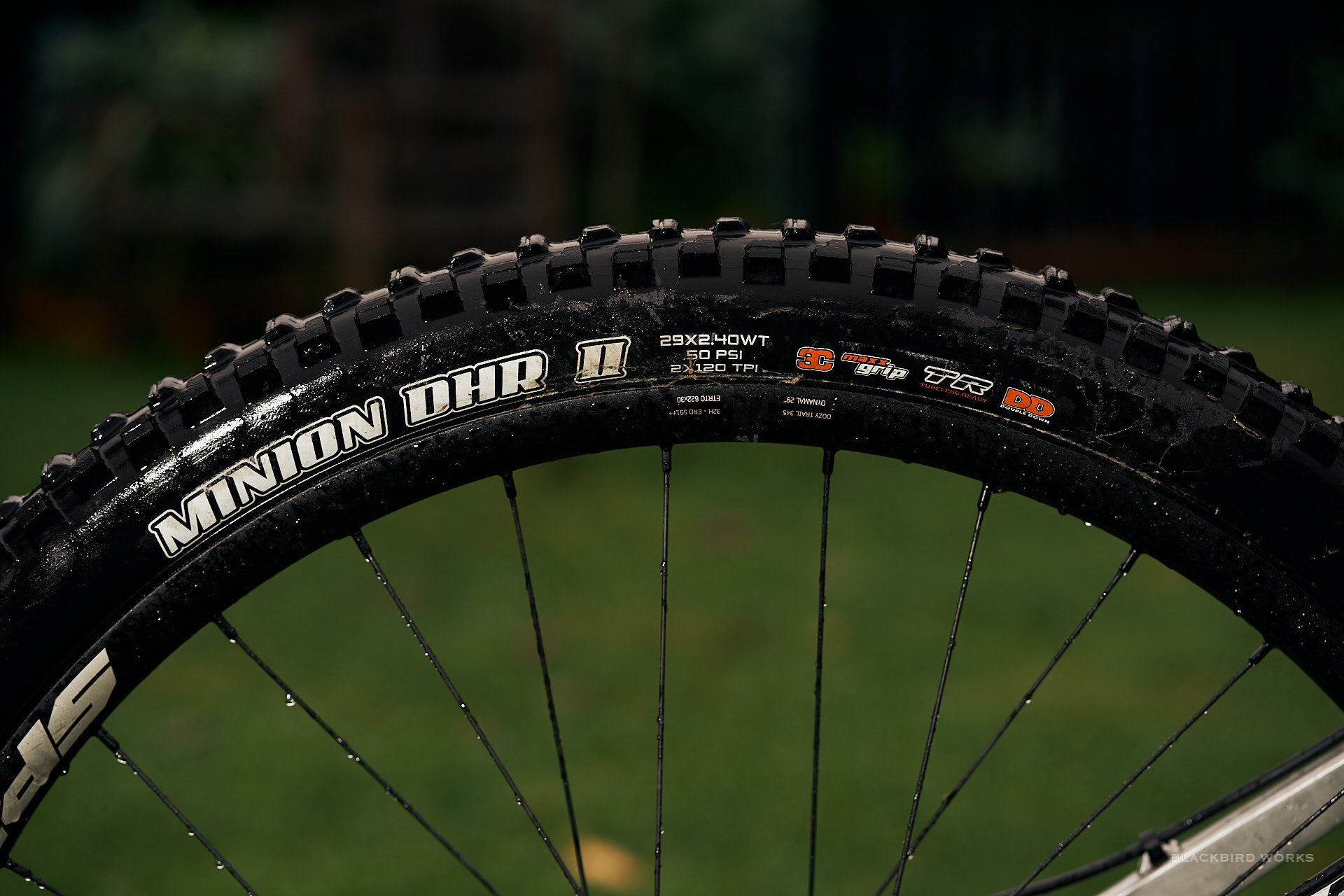
No rim strikes with this combo
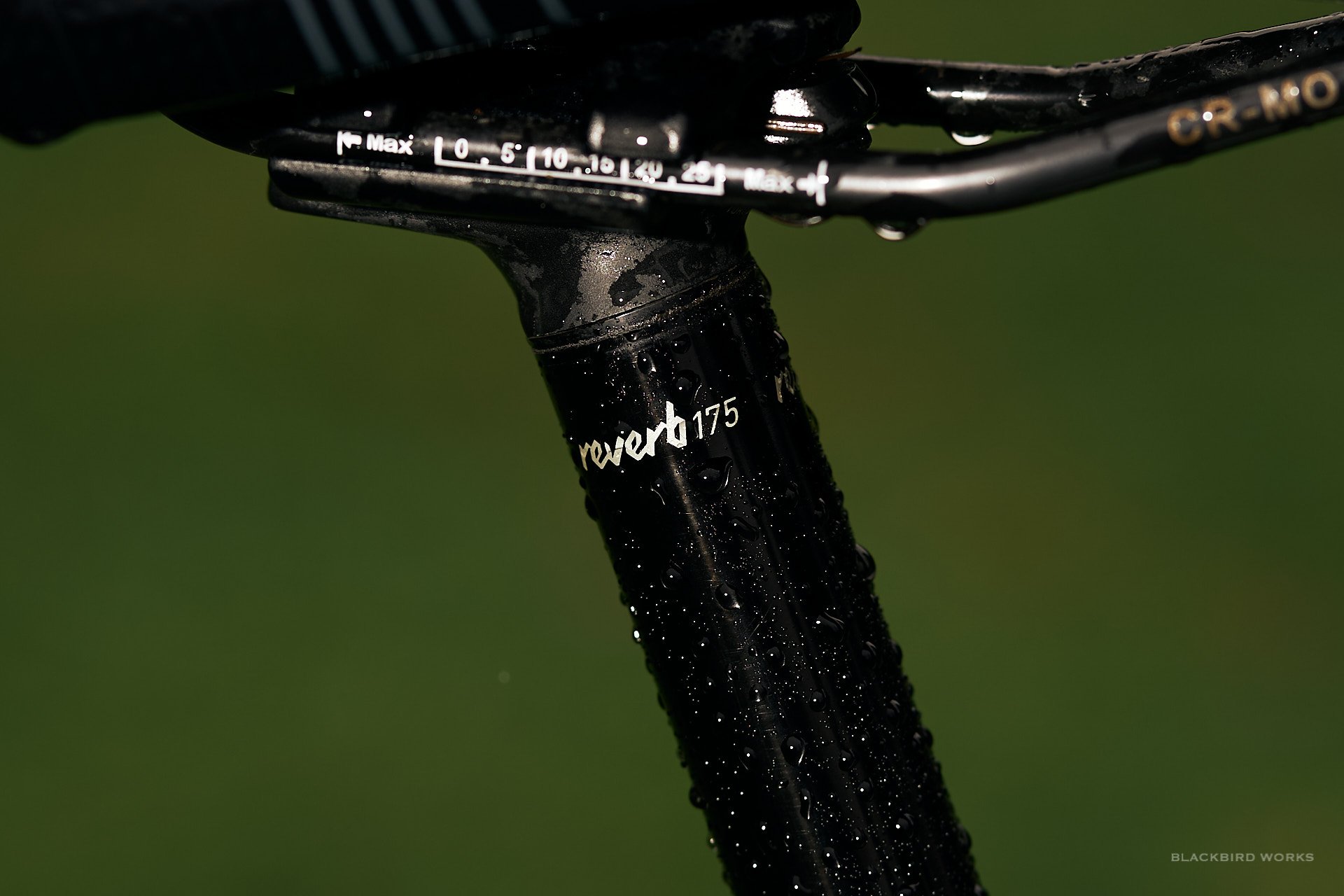
Reverb might be my least favourite dropper post in the market, but does the job well.
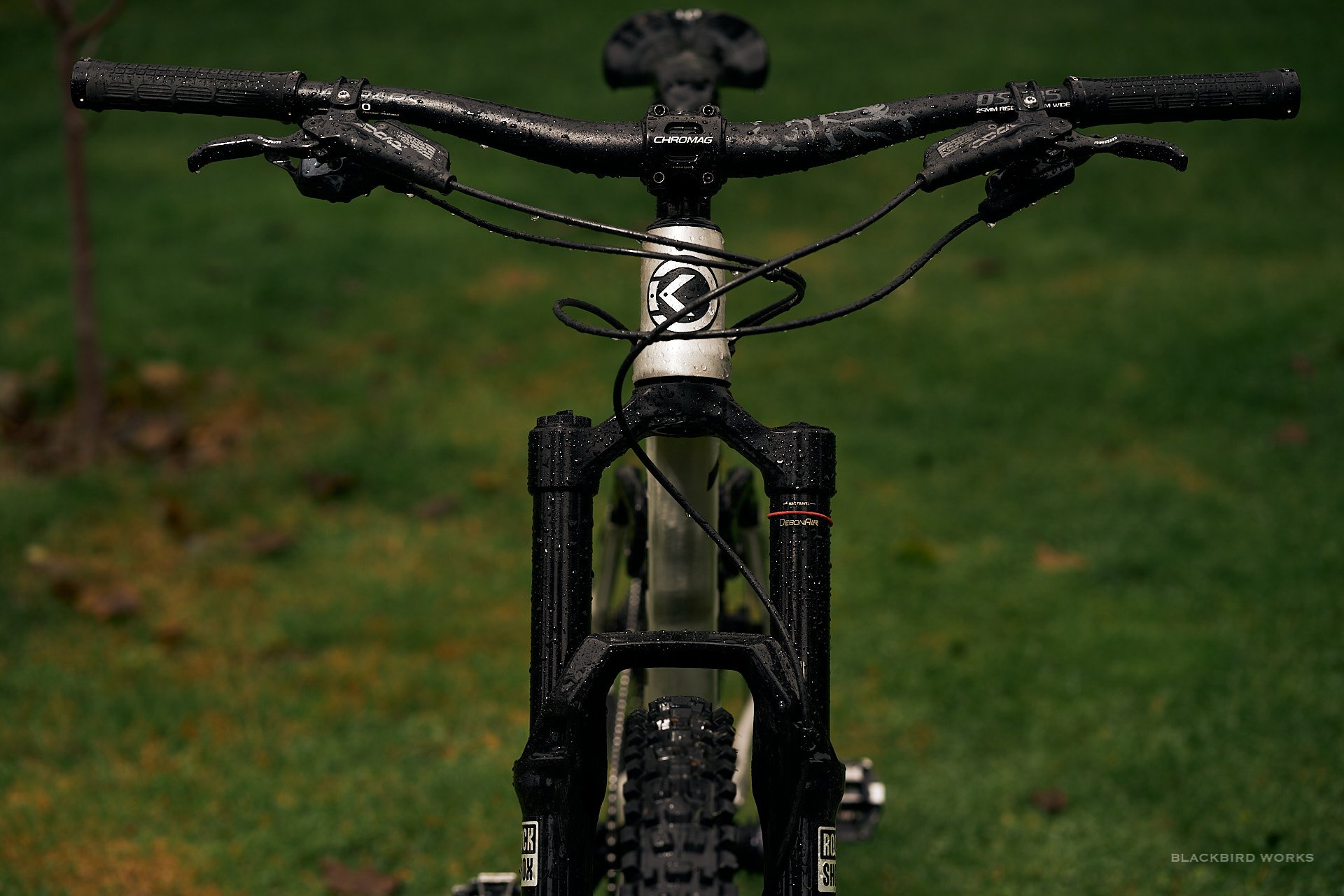
Low stack height with a short headtube. Great starting platform for variety of fits
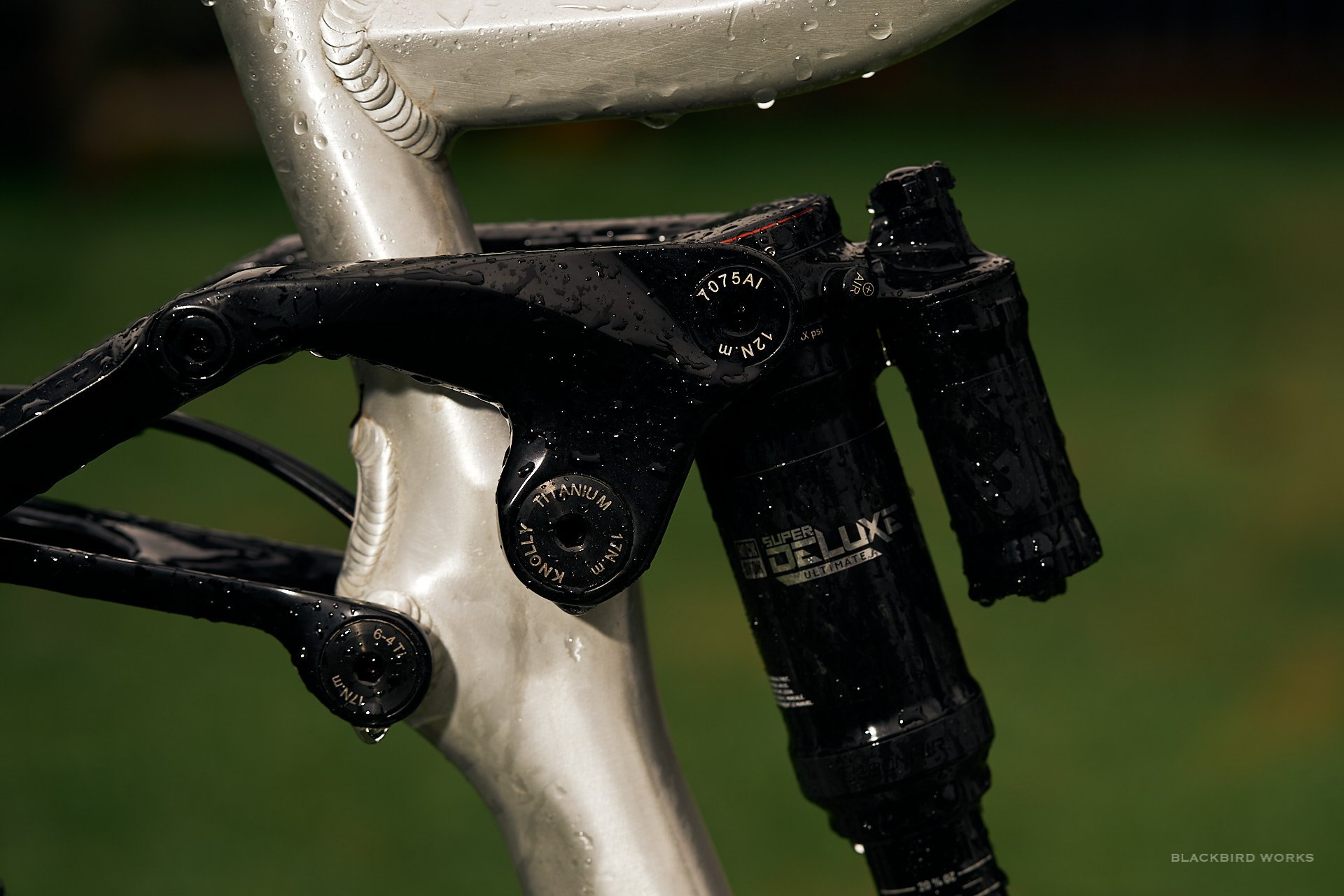
Hidden Titanium is such a tease
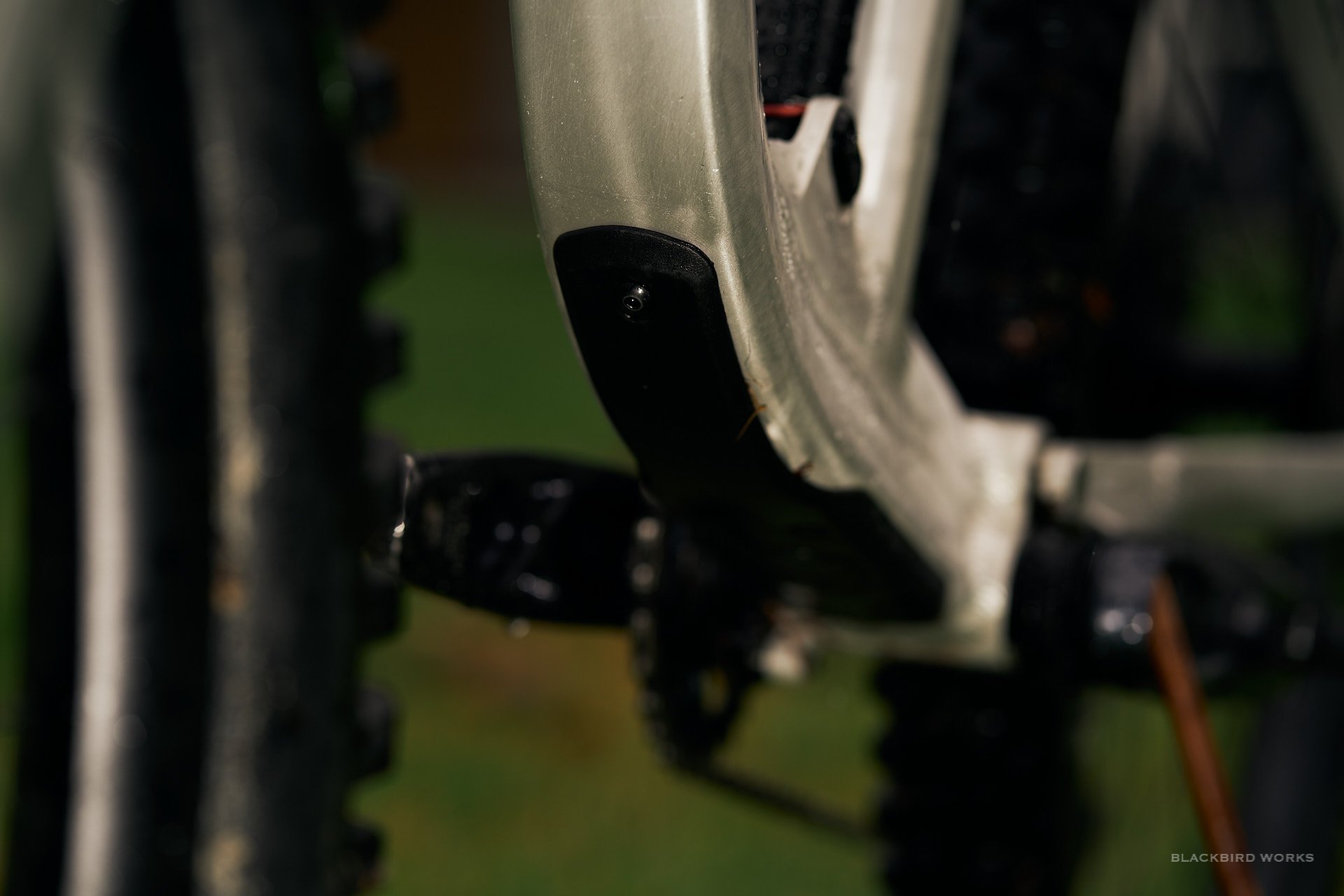
Minimal downtube protection... but not much of a concern for an alloy bike
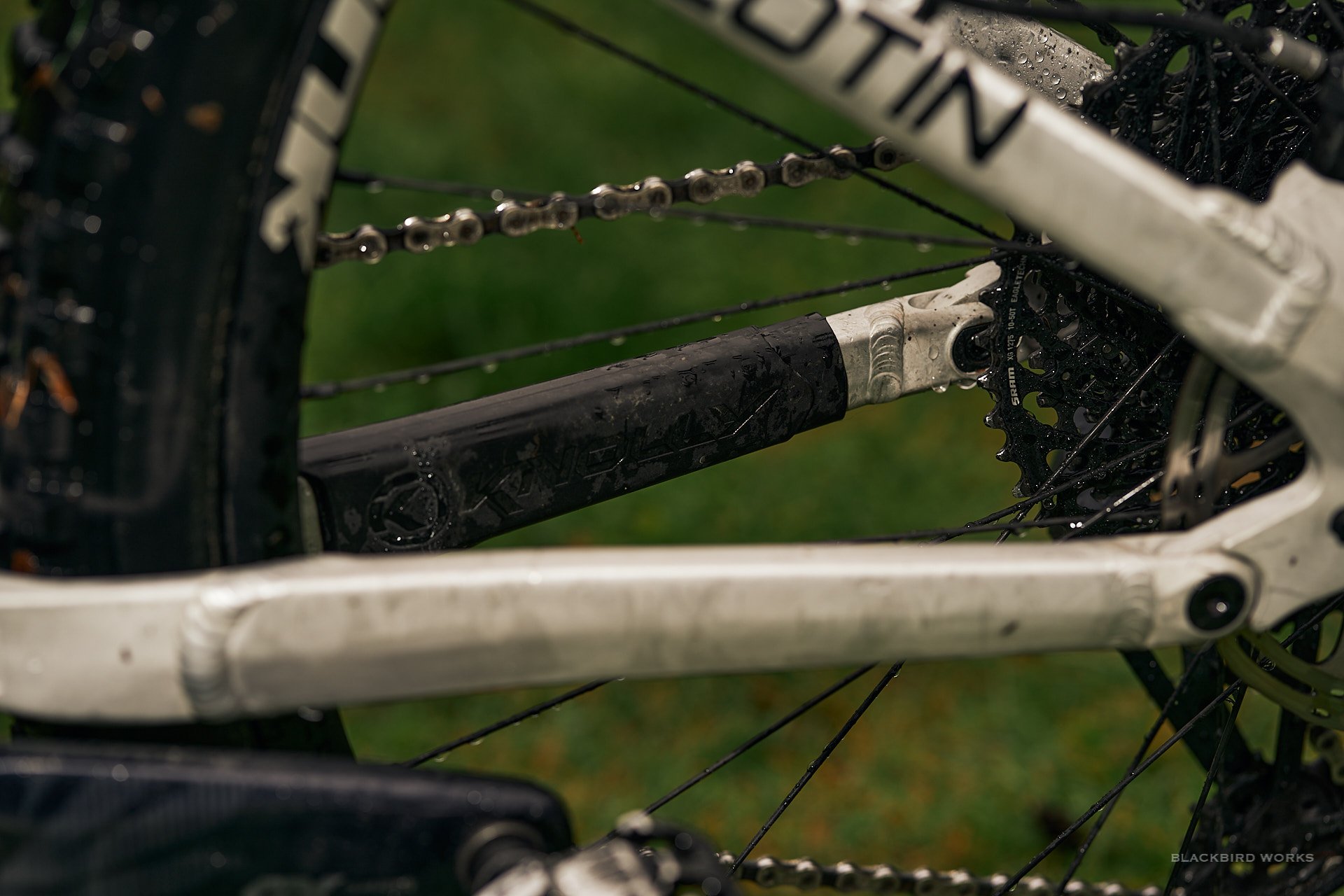
Chain runs far enough from the stays. This bike rode extremely quiet. thumbs up
First Rides and Thoughts
I managed a couple of non critical rides aboard the Chilcotin in wet west coastal November. The climbing position was comfortable and traction was ample. The MaxGrip tires in heavy casing played a roll in this, set at 18psi front, 20psi Rear with having no rim dent-fear was great. The bike felt a lot more manageable than the numbers suggested. I never felt like I was on a bike with gobs of suspension and a fairly slack head angle. I can see lighter casing tires and bigger alpine days being a fun formula for this machine.
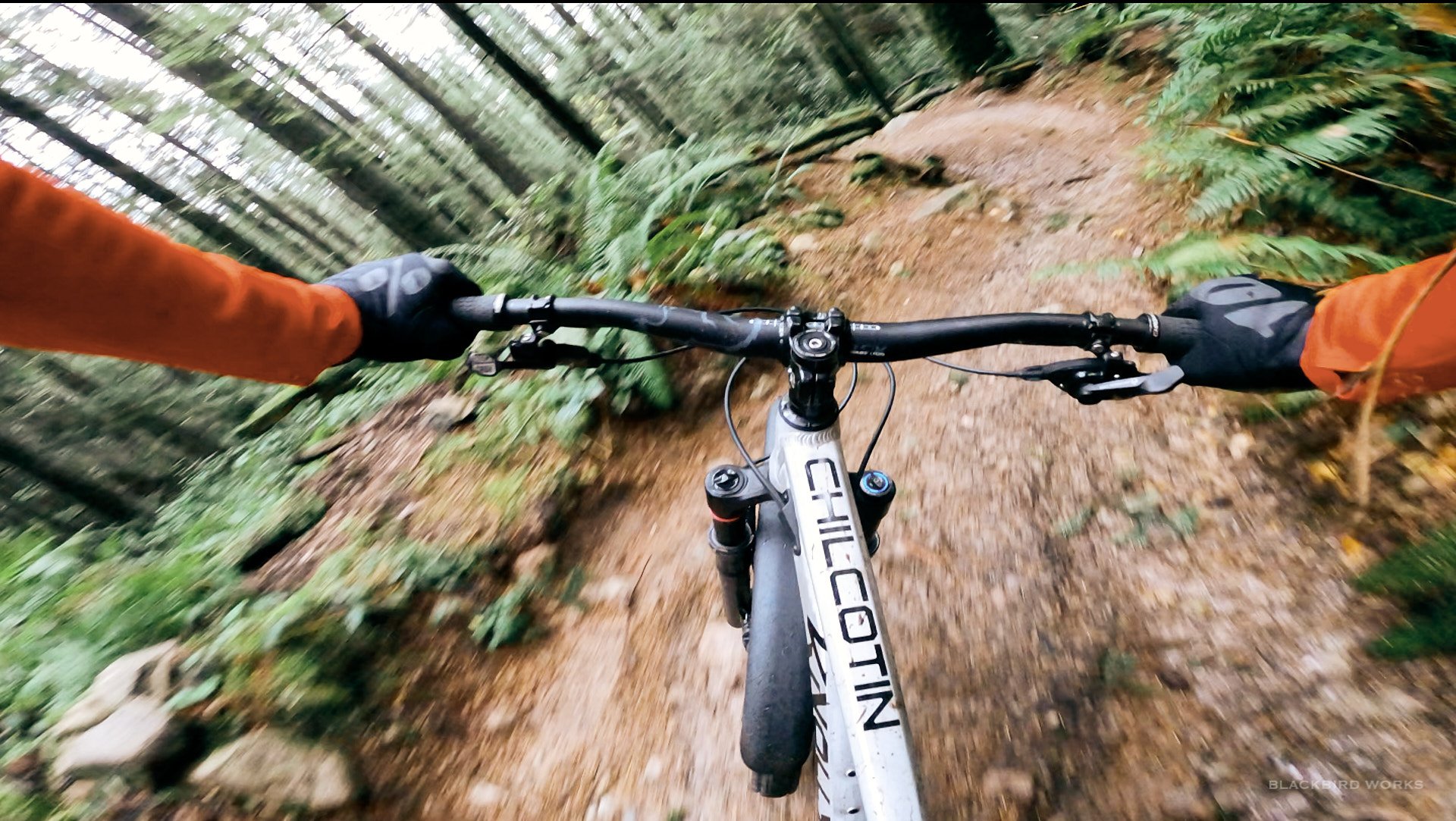
More of this on this beast please
Cash Money
I'm looking forward to bigger days and bigger mountains aboard this latest creation from the Knolly think tank.
$5300USD - $6880 CAD price tag is a no brainer for a bike this capable on paper.
Keep and eye on the Knolly Website for spec. updates and other build options. I am especially looking forward to seeing the Moody Blue in person.
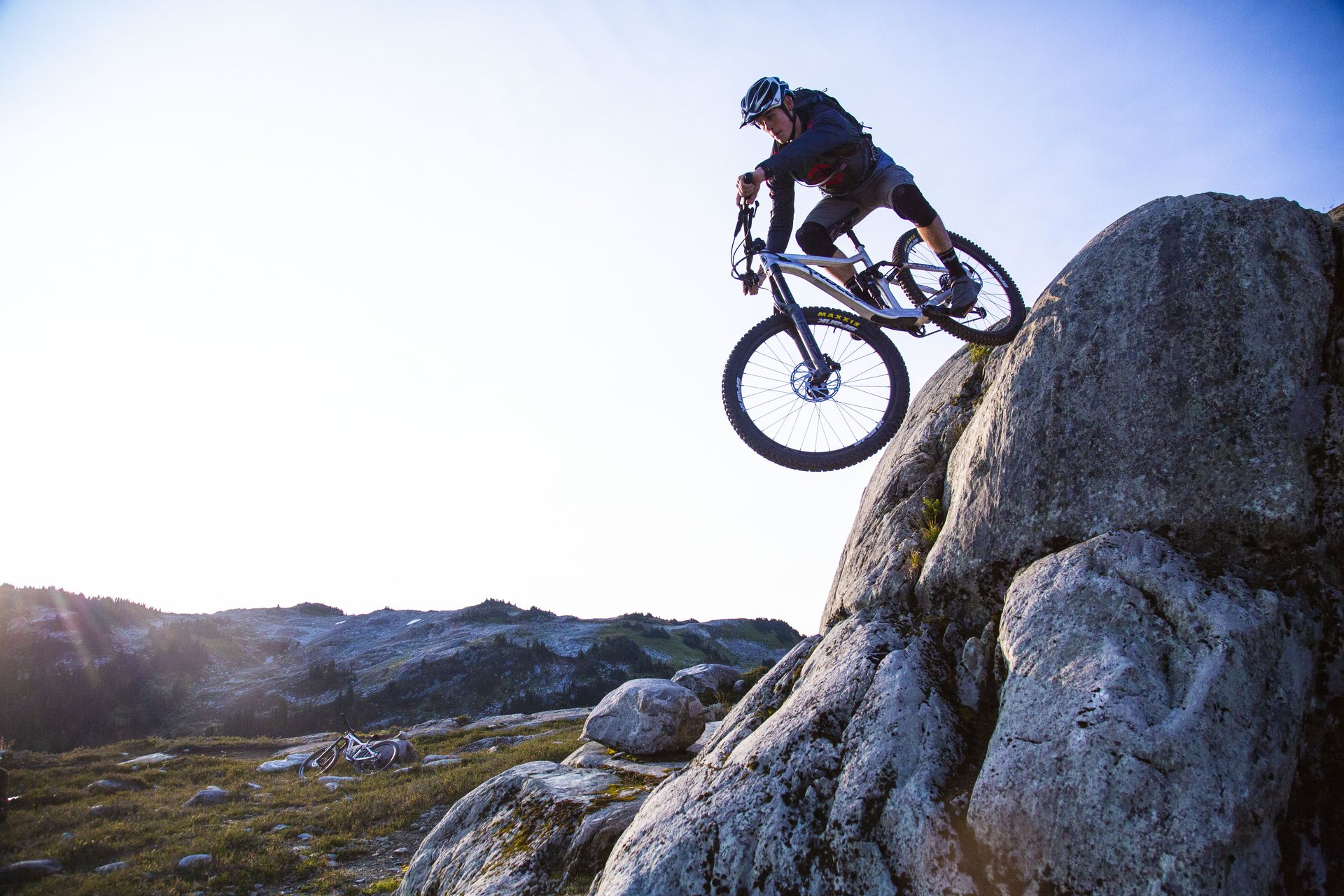
Photo- Knolly Bikes
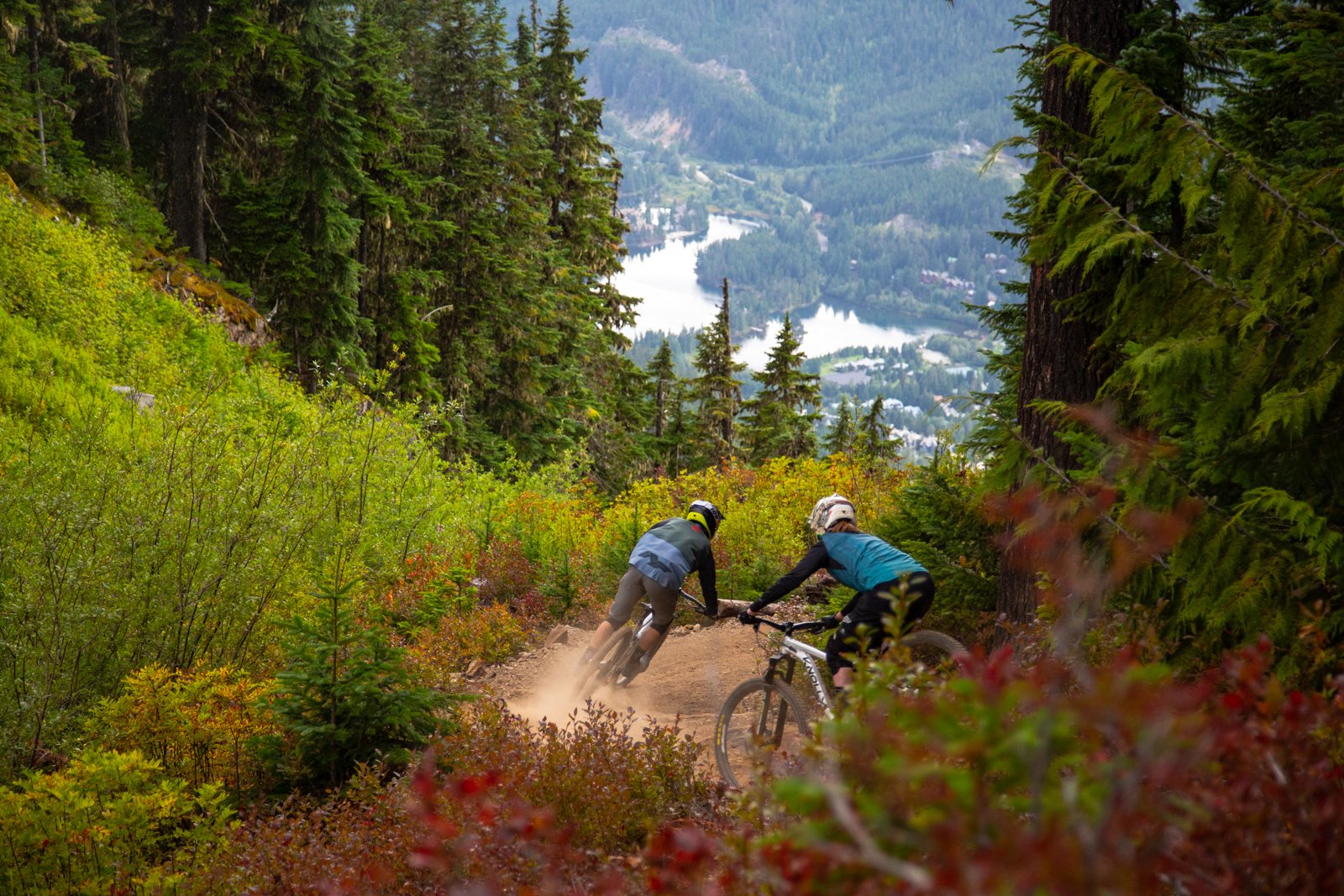
Photo- Knolly Bikes
5'8"
162lbs
Playful, lively riding style
Photographer and Story Teller
Lenticular Aesthetician
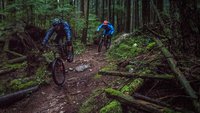
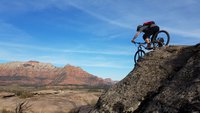

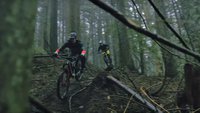
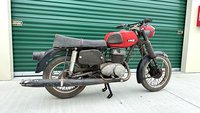


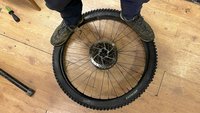

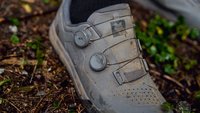

Comments
Skyler
3 years, 5 months ago
I know that deciphering geo charts is pretty complicated, but I'm trying to wrap my head around the extremely long Effective Top Tube lengths. This might be a pretty unpopular opinion, but I find it very easy to adapt to different Reach/Stack lengths. On the other hand, even though I'm all about the down, there's no way around the fact that I spend most of my time in the bike sitting and pedaling. And I can really notice when the seated fit of a bike is too long or too short. ETT seems like the most useful number for getting an picture of this.
The Knolly looks to be about 30-40mm longer in the top tube length than the same size in almost every other brand. Is it a much more stretched out, aggressive pedaling fit, or am I misunderstanding the numbers?
Reply
Deniz Merdano
3 years, 5 months ago
It's a roomy bike for sure.
As you said it is significantly longer than my regular ride, the Druid, but doesn't feel all that much longer in reality.
I did slide the saddle all the way forward on the Chilcotin to get a comfortable pedaling position.
Once I did that, the long top tube did not bother me one bit.
Which makes me think, I maybe should have gone for a Large on the Druid.
Reply
lkubica
3 years, 5 months ago
This comment has been removed.
lkubica
3 years, 5 months ago
Knolly measures ETT differently than other brands. They say it makes more sense, I say they should measure it like everyone else, because otherwise it is useless. They measure ETT for a seat extended to a "typical ride height", whatever this means.
Reply
knollybikes.com
3 years, 5 months ago
Hi Ikubica:
Thank you for your comment
What we measure is relatively straightforward: the horizontal length from the top of the head tube axis to where it intersects the effective seat tube axis. That's the trick, because the ffective seat tube axis is a line out in space which makes it hard to measure with a tape measure.
What we don't do is what a lot of other brands do and that is "dumb down this measurement" by trying to pretend that the axis of the Effective and Actual seat tubes meet in space at a "magically changing saddle height that just happens to correspond also to the stack measurement". Because it doesn't. Unless you are a relatively small person, your saddle height is significantly higher than the stack measurement from the top of your head tube.
Hope that helps clear a few things up!
Reply
Cr4w
3 years, 5 months ago
The first paragraph totally makes sense. It's crazy that anyone would measure ETT any other way.
Second paragraph: so Knolly measures ESTA by the line that goes between the BB and the center of the seat collar? Do you adjust the actual seat tube angle by size to ensure roughly the same ESTA for each size?
Reply
knollybikes.com
3 years, 5 months ago
Not seat tube collar: saddle position. And technically, that's the saddle rails (top of the seat post).
Reply
mikeynets
3 years, 5 months ago
I've read your explanation of this before — on your website and maybe in some comments too. I'm average height (177cm, ~5'10") but with a short inseam for my height of 30" and a 0 ape index. On almost all my bikes, my saddle ends up just a tiny bit above my bars.
Not trying to be a sh!t stirrer, but isn't saying "your saddle height is significantly higher than the stack measurement from the top of your head tube" similar to other companies saying effective and actual seat tube angles meet at X spot in space? I know my inseam is short for my height, but I can comfortably ride most medium or large frames with this saddle to bar relationship. So I'm average sized I'd say, but maybe built like a Neanderthal!
Banshee lists 3 different heights for seat angle — I think that's a good practice.
Reply
lkubica
3 years, 5 months ago
Your measurement makes more sense but is confusing to customers. You should at least provide two measurements. Those numbers are only useful to compare my current bike with yours. What you achieve is customers thinking that the pedaling position on your bikes is awkward. I bet you loose customers because of it or they buy frames one size too small. I owned a Knolly and only because I have found someone with the an M I discovered that need L actually.
Reply
Vik Banerjee
3 years, 5 months ago
Skyler - when I ordered my last Knolly frame I sized it based on the Eff TT and got a frame that was too small so I had to sell it at a loss and buy the next size up. When I measured the Eff TT the standard way I got a number 1" shorter than on the geo chart for that frame.
That wasn't this frame, but it's something to be aware of. Knolly commented below of how they calculate the Eff TT...although I have read that comment a couple times and still don't understand what's going on. I haven't had that issue with any other frames so I think my understanding of Eff TT is correct or at least aligns with the standard way of measuring it.
Reply
Skyler
3 years, 5 months ago
Dang, that sounds frustrating! I think that's a good example of why it's important for people to have variables measured in a consistent way, whether the variables are the best ones they could be or not.
Reply
Vik Banerjee
3 years, 5 months ago
On a positive note I really enjoyed the Knolly once I got the sizing sorted so the hassle was worth it.
Reply
Sandy James Oates
3 years, 5 months ago
Those welds are like looking at gorgeous artworks.
Reply
SteveR
3 years, 5 months ago
You might want to change the caption for the third photo:
"Specious in design and easy to clean"
From the Collins dictionary:
"Specious definition: Something that is specious seems to exist or be true, but is not real or true"
Reply
Deniz Merdano
3 years, 5 months ago
Ironic typo for a not yet existing bike...
Thank you
Reply
Moritz Haager
3 years, 5 months ago
I have always liked the look of Knolly bikes. Looking forward to a full review on this. Looks like a pretty heavy setup though. What is the weight? I guessing its at least 34 lb.
Reply
Deniz Merdano
3 years, 5 months ago
This bike came in at around 34lbs.
that is with 1300gr tires.
the production model will have Exo+ tires.
that weight is respectable with a heavy duty build with no carbon parts.
Reply
Cr4w
3 years, 5 months ago
34lbs isn't heavy for a bike that will survive.
Reply
Cr4w
3 years, 5 months ago
That's a Ken Jeong sized head tube.
Reply
Deniz Merdano
3 years, 5 months ago
I'd say more like Tom Cruise sized...
Reply
Cr4w
3 years, 5 months ago
This comment has been removed.
Brian Tuulos
3 years, 5 months ago
That short a head tube on a long travel, slack 29er that I believe is rated for a DC fork makes me think twice.
-edit - 106mm not too bad. Looks shorter in pics
Reply
Jeremy Sh
3 years, 5 months ago
It's always intrigued me that Knolly has persisted with such a complex linakge design (and imho not aesthetically pleasing). The kinematic could be achieved with a much sleeker and simpler packaging. I guess it would be hard to change when your brand image is based on that....
Reply
Skooks
3 years, 5 months ago
How much time have you spent riding Knolly bikes? You may not like how they look, but there's nothing complex about the design once you understand how it works.
Reply
Perry Schebel
3 years, 5 months ago
yeah, i'm guessing it was originally a way around the fsr patent? agreed that the added bits & aesthetically awkward (imo) forward offset seat tube isn't the most elegant solution, but it's certainly an effective brand identifier / differentiator. hard to let go of.
on that note (random ramble) - i find it interesting specialized dropped the fsr on the new carbon stumpy, after being so intrinsically tied to that suspension platform since forever. though the silhouette is pretty similar (and realistically, performance), so not a radical departure i suppose.
Reply
Hugo Williamson
3 years, 5 months ago
Somewhat like when Dave Turner swapped out the hallowed “fully active” chain stay Horst link for a seatstay link, and no one could tell the difference, no matter how hard they tried!! Probably indicates that the variables ( that are assumed on the CAD ) are somewhat different when the bike is ridden in the dirt.
Reply
JVP
3 years, 5 months ago
I dunno about that. I don't own a Knolly, but a decent number of my friends do (seems like it's mostly Knolly, Transition and Evil, with a random Santa Cruz sprinkled in). I've thrown a leg over them (always a size too small), and they ride differently than other Horst bikes. Is that the 4x4? Who knows, but they do have a unique ride feel and excellent braking that I quite like.
My hesitation with Knolly isn't the linkage, it's the seat tube position. Not ideal for taller guys, though I'm told they've adjusted it in recent iterations. Some day when the air isn't swirling with virus particles I'll get to demo an XL and see if the seat is forward enough for my inseam.
Reply
IslandLife
3 years, 5 months ago
This comment has been removed.
Please log in to leave a comment.